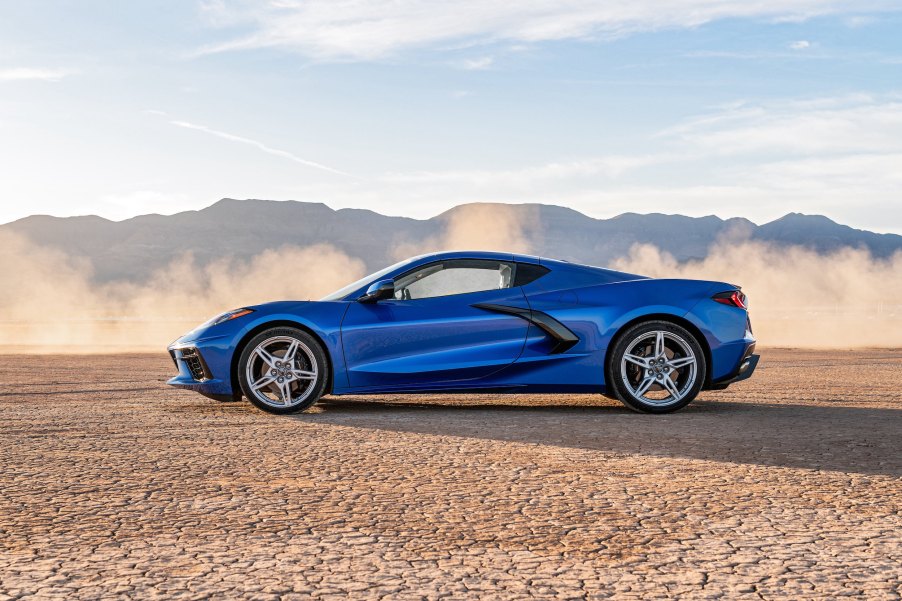
Why Are Most Sports Cars Rear-Wheel Drive?
You’ve likely encountered terms like rear-wheel drive, front-wheel drive, two-wheel drive, four-wheel drive, and all-wheel drive. While a few of these terms overlap, the simplest explanation is that they refer to the location and number of wheels that receive propulsion from the vehicle’s powertrain. So, why is rear-wheel drive (RWD) prominent in sports cars?
Why are sports cars RWD?
In a vehicle with an internal combustion engine and RWD, pistons use the energy from the combustion process to drive a crankshaft producing rotational power. This rotational power passes through the transmission allowing selectable gear ranges to optimize the engine’s RPM range relative to the vehicle’s speed. A drive shaft carries the rotation to the vehicle’s rear differential for diversion to the rear tires and another gear ratio reduction.
According to Car and Driver, sports cars feature rear-wheel drive primarily for enhanced weight distribution. Typical American muscle cars use heavy V8 engines to generate horsepower. Also, powerful engines require strong transmissions and drivelines. Placing that much weight directly over the front tires would require a massive front suspension system. Instead, the typical RWD system spreads the weight over the length of the car.
Advantages and disadvantages of rear-wheel drive
There are advantages and disadvantages to the rear-wheel drive system that is often found in sports cars. Advantages include:
- Increased launch traction as weight transfers to the rear under acceleration.
- Better cornering under acceleration as the RWD front tires’ only job is turning.
- Straight line acceleration is not subject to “torque steer” typical to front-wheel drive cars.
- Even weight distribution and center of gravity provide a better driving sensation.
However, there are disadvantages as well:
- The transmission, driveshaft, and rear differential require floor pan accommodations that cut into passenger and cargo space inside the vehicle.
- RWD cars can lose traction under acceleration with less weight over the drive wheels on slick roads.
- Heavier RWD drivetrains tend to get lower fuel mileage.
Which sports cars have rear-wheel drive?

Modern sports cars like the Toyota GR86, Mazda MX-5 Miata, Dodge Challenger, Ford Mustang, Chevrolet Camaro, and the Chevrolet Corvette still feature RWD. Although, the newest Corvette generation takes advantage of lightweight engine components to move its V8 behind its two-seat passenger compartment, further enhancing its weight distribution.
Autotrader points out that “some all-electric cars, including the Tesla Model S, Ford Mustang Mach-E, and Volkswagen ID.4,” also feature RWD but more for the driving experience than weight distribution. In addition, some luxury vehicles like the BMW 3 Series and Mercedes-Benz C-Class deliver enhanced driveability using RWD.
Sports and luxury cars are not the only passenger vehicles using RWD. Light-duty pickup trucks also depend on RWD for increased cargo carrying capacity, towing heavy trailers, and better stability. Additionally, pickup trucks typically offer four-wheel drive systems by adding a transfer case, front driveshaft, and front differential to the standard RWD components.
Is buying a rear-wheel drive sports car worth it?
While we’ve noted some disadvantages to RWD vehicles, the benefits outweigh the negatives. This is especially true when applied to sports cars, luxury vehicles, and light-duty pickup trucks. Although the RWD components take away some space in a sports car’s already small interior, a sports car conforms to you and becomes an extension of your body. The true advantage of RWD in a sports car is the ability to drive with the steering wheel and the accelerator pedal.



